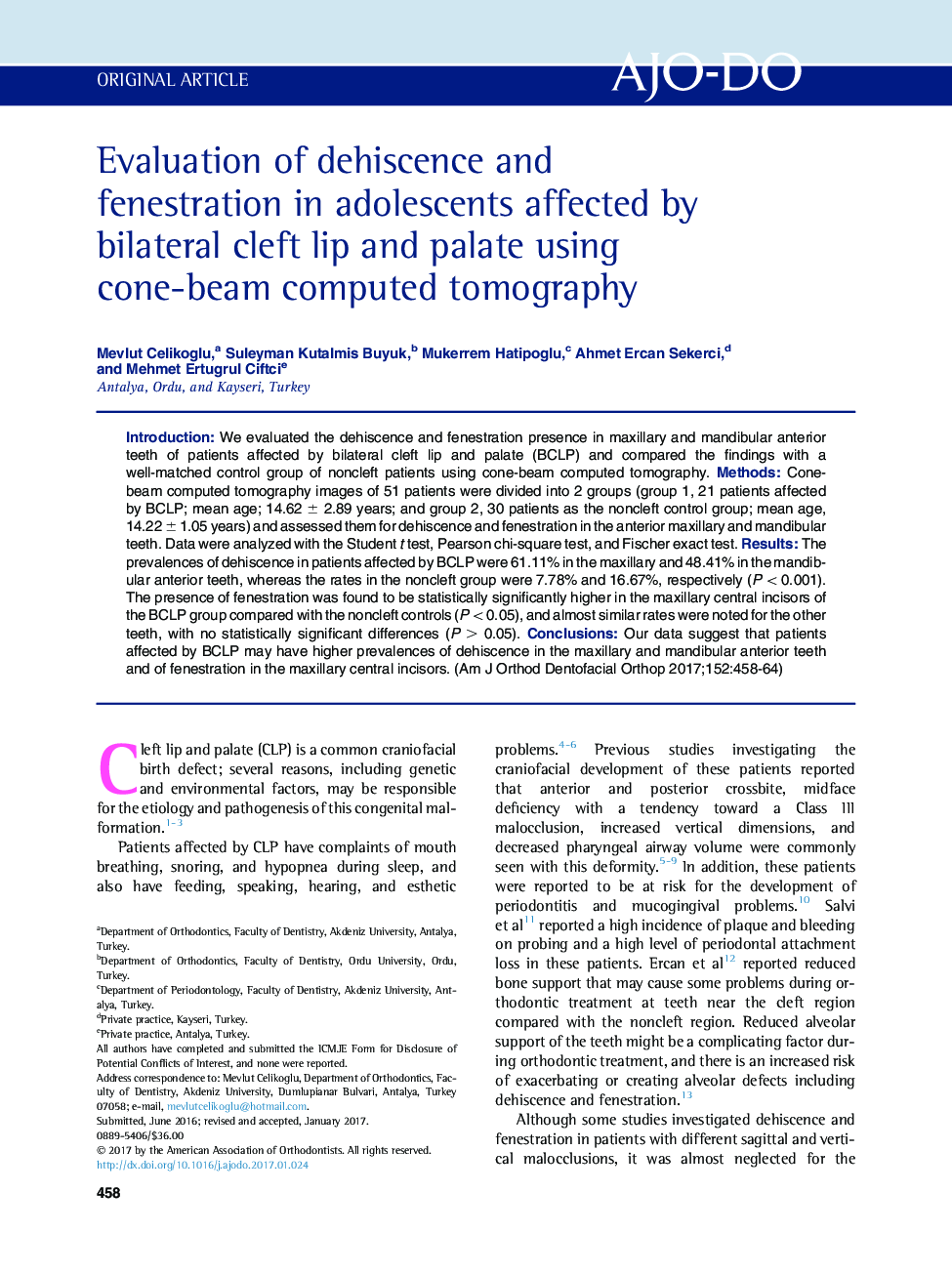| Article ID | Journal | Published Year | Pages | File Type |
|---|---|---|---|---|
| 5637379 | American Journal of Orthodontics and Dentofacial Orthopedics | 2017 | 7 Pages |
â¢Dehiscences and fenestrations were assessed in the anterior teeth of BCLP patients.â¢CBCT images were used in this retrospective study.â¢Dehiscences were higher in anterior teeth of the BCLP group compared with controls.â¢Fenestrations were higher in the maxillary central incisors of the BCLP group compared with controls.
IntroductionWe evaluated the dehiscence and fenestration presence in maxillary and mandibular anterior teeth of patients affected by bilateral cleft lip and palate (BCLP) and compared the findings with a well-matched control group of noncleft patients using cone-beam computed tomography.MethodsCone-beam computed tomography images of 51 patients were divided into 2 groups (group 1, 21 patients affected by BCLP; mean age; 14.62 ± 2.89 years; and group 2, 30 patients as the noncleft control group; mean age, 14.22 ± 1.05 years) and assessed them for dehiscence and fenestration in the anterior maxillary and mandibular teeth. Data were analyzed with the Student t test, Pearson chi-square test, and Fischer exact test.ResultsThe prevalences of dehiscence in patients affected by BCLP were 61.11% in the maxillary and 48.41% in the mandibular anterior teeth, whereas the rates in the noncleft group were 7.78% and 16.67%, respectively (P < 0.001). The presence of fenestration was found to be statistically significantly higher in the maxillary central incisors of the BCLP group compared with the noncleft controls (P < 0.05), and almost similar rates were noted for the other teeth, with no statistically significant differences (P > 0.05).ConclusionsOur data suggest that patients affected by BCLP may have higher prevalences of dehiscence in the maxillary and mandibular anterior teeth and of fenestration in the maxillary central incisors.
